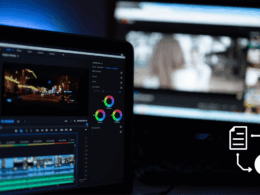If your ads feel generic, they will get scrolled past. If they feel personal and timely, your audience will click, convert, and come back. The difference is how you use AI. With the right setup, AI helps you find the right person, match the right message, and bid the right price in the right place. Use the seven strategies below to build ad campaigns that learn from every impression and keep improving week after week. In this article, we’ll explore the top 7 AI ad strategies to double your ROI, hyper-personalization, and GEO inside.
Why AI Changes Paid Media Outcomes – Hyper-Personalization GEO Inside
AI helps you predict intent, score creative variations, and route budget to the combinations that work. It does not replace strategy. It amplifies it. When you connect clean data, clear goals, and simple guardrails, AI can raise relevance without raising workload. That is how you double ROI with fewer guesswork cycles.
AI Ad Strategies to Double Your ROI 1: Hyper Personalization Across The Full Journey
Personalization has to go past the first click. Many brands tailor the ad, then send everyone to the same page. Fix that gap. Map each audience segment to a message, a landing variant, and a follow up. Use AI to score which headline and offer align with each segment. Sync those choices into your CRM so the email and sales outreach continue the same story. Keep privacy in mind. Only use data that is consented and necessary. The aim is to be useful, not creepy.
How to make it practical – Hyper-Personalization GEO Inside
Start with three to five high value segments such as first time visitors, cart abandoners, recent buyers, and dormant subscribers. Pair each segment with a specific value prop and a benefit led headline. Use dynamic text on the landing page so the promise in the ad appears in the hero. Track conversion and lead quality by segment, not only by channel.
Strategy 2: GEO Targeting That Feels Local, Not Generic
Geo is more than a radius. It is culture, weather, events, and inventory. AI can mix those signals to serve creative that feels local while staying on brand. Use city names, neighborhood cues, and regional offers only when relevant. Store availability and pickup speed are great local levers for retail. For services, use local proof points such as response times or region specific reviews. Rotate creative by season and by micro events. A brunch spot promotes sunny weekend menus. A home services brand promotes storm checks after heavy rain. Keep exclusions tight so you do not waste budget outside your service area.
Strategy 3: Creative Variations At Scale With AI Assisted Production
The best ad wins on fit, not only on flair. Fit comes from testing. Use AI to generate first drafts of headlines, descriptions, and image variations. Keep a human editor in the loop to protect brand voice and accuracy. Build modular templates for each format so you can swap offers and visuals fast. Let your ad platform optimize toward the combination that maximizes your chosen outcome. Archive the losers with a note on why they missed so you do not repeat dead ends.
Creative guardrails that help – Hyper-Personalization GEO Inside
No claims you cannot prove. No sensitive attributes. Keep reading level simple. Front load value in the first five words. If a line only works with insider jargon, rewrite it for a smart, busy reader.
AI Ad Strategies to Double Your ROI 4: Predictive Budgeting And Smart Bidding
Manual bids lag. AI learns patterns faster than humans can. Feed your platform clean conversions, not vague proxy goals. Use value based bidding when revenue signals exist. If you lack purchase data, pass lead quality or pipeline stage as a conversion value. Set floors and ceilings so your bid strategy never wanders into silly spend. Review search terms, placement reports, and audience overlaps every week. Exclude what wastes money. Reinforce what prints value.
A simple cadence
Daily checks for spend spikes and delivery issues. Weekly tests for new audiences and creatives. Biweekly review of assisted conversions. Monthly reallocation by channel and campaign family based on blended ROI, not last click guesses.
AI Ad Strategies to Double Your ROI 5: Incrementality And Holdout Tests
AI can lift performance, but you must prove the lift. Run geo based holdouts or audience split holdouts to measure incrementality. Keep tests simple and long enough to overcome noise. Use the results to decide where to expand and where to cut. This avoids the trap of congratulating yourself for conversions that would have happened anyway. When in doubt, test again with a smaller budget. The goal is confidence, not perfection.
Strategy 6: First Party Data Enrichment And Consent
The end of easy third party tracking is not bad news. It is a nudge to build your own signal. Use clean forms, clear value exchanges, and short surveys that help you understand intent. Enrich within policy. Ask one smart question at a time, for example the city, the use case, or the timeline using Hyper-Personalization GEO Inside.
Feed this data into your ad audiences and landing logic. Keep retention limits tight. Purge what you no longer need. Strong consent and data hygiene improve delivery quality and protect your brand.
AI Ad Strategies to Double Your ROI 7: Short Feedback Loops Between Ads, Site, And CRM
AI works best when feedback is fast. Connect your ad platforms to your analytics and your CRM so outcomes flow back within hours. Score leads and orders by source, audience, creative, and location. Share performance snapshots with copywriters, media buyers, and sales weekly. When the team sees which angle won and why, the next idea improves. Document changes and outcomes in a simple log so learning compounds over time.
The Playbook You Can Ship This Month
Set one business goal per campaign family. Revenue per channel for ecommerce. Qualified pipeline for B2B. Install conversion tracking with server side support where possible. Build three audience tiers. Tier one uses first party signals and exact intent. So, yier two uses lookalikes and interest stacks.
Tier three explores new geos or themes with small budgets. Draft ten headlines and five images per tier, edited by a human. Launch with value based bidding where data allows. Add one geographic layer, such as city plus five mile radius near stores or service areas. Update your landing pages so each ad’s promise appears in the headline. Review daily for delivery and weekly for outcomes. Pause the lowest quartile. Move spend to the top quartile. Start a holdout in one region to measure true lift.
A Practical Comparison Table For Your Planning
| Strategy | Primary Goal | Best For | What To Measure | Quick Starter Action |
|---|---|---|---|---|
| Hyper Personalization | Relevance after the click | Brands with multiple segments or SKUs | Segment level conversion rate and revenue per visitor | Map three segments to three landing variants and sync to CRM |
| GEO Targeting | Local fit and store impact | Retail, delivery, regional services | Store visits, local conversion rate, wasted impressions outside area | Add city level copy and inventory notes on local ads |
| AI Assisted Creative | Faster testing cycles | Any account with multiple formats | Win rate by headline and image, time to first winning combo | Generate ten lines, human edit, ship three per audience |
| Smart Bidding | Efficient spend allocation | Accounts with enough conversion volume | Cost per value, return on ad spend, impression share on high value terms | Switch to value based bidding and set sensible floors |
| Incrementality Tests | Confidence in true lift | Mature campaigns with steady volume | Lift percentage and cost per incremental conversion | Run a two week geo holdout across similar cities |
| First Party Data | Durable targeting and cheaper CPMs | Brands with returning visitors | Consent rate, profile completeness, repeat conversion rate | Add one question on the form, feed to audiences |
| Closed Loop Feedback | Faster improvements | Teams with ads, site, and CRM | Time from impression to insight, fix time for losing assets | Share a weekly three slide report with winners and losers |
Copy And Creative That Match Intent: AI Ad Strategies
Write like a helpful human. Use verbs and benefits. Avoid clever lines that say little. On local ads, mention the city or a neighborhood landmark when relevant. So, on prospecting ads, lead with a pain and a simple fix.
On retargeting ads, remove friction. Offer a sample, a quiz, or a calculator that gets the visitor to the next step. On landing pages, repeat the promised benefit in the first line, then prove it with a short list, a photo, or a stat. Keep forms short. Add one trust cue above the fold.
Budgeting Without Guesswork
Split budget by funnel stage. Give each stage a clear target. Prospecting drives qualified reach at a capped cost per engaged visit. Consider view rate and post click depth for top of funnel video.
Consider engaged sessions and assisted conversions for discovery. Mid funnel retargeting aims for add to cart or demo request. Bottom funnel aims for purchase or opportunity created. Reinvest based on incremental return, not vanity numbers. Small daily caps for tests. Bigger weekly increases for winners. Remove what does not move the scoreboard.
AI Ad Strategies: Measurement That Survives Signal Loss
Track server side where possible. Use enhanced conversions and clean consent. Blend platform results with your analytics truth so you do not over rely on one dashboard. Watch leading indicators when lagging metrics take time. Engagement on the landing page is a good early flag. Strong add to cart or qualified meeting booked is a better one. Keep an eye on frequency by geo and segment so you do not burn audiences.
Common Mistakes To Avoid
Do not use personalization that shouts private data. So, do not force a single creative across all geos. Do not judge a campaign on a two day window when your sales cycle is thirty days. In addition, do not let AI run without guardrails. Do not skip holdouts. Do not scale spend without landing page fixes. Keep your stack light. Remove tools that add steps without adding wins.
Final Takeaway
AI advertising is not about clever hacks. It is about consistent fit between person, place, and promise. Hyper personalization makes the message feel right. Geo insight makes it feel close. Smart bidding and fast feedback make the budget work. Start with one campaign family, one geographic layer, and one test per week. Keep what works, drop what does not, and let compounding learning do the rest.
Frequently Asked Questions
How Many Creative Variations Do I Need
Start with three to five per audience. Retire the bottom performers early and replace them with new ideas based on the winners.
What If I Do Not Have Enough Conversion Data
Use engaged micro conversions such as product views, add to cart, or qualified form views. Switch to value based bidding once you collect reliable purchase or pipeline values.
How Do I Keep Personalization Respectful
Use consented data and clear value exchanges. Personalize benefits and offers. Avoid showing details that feel private.
How Fast Can I Expect Results
You can feel improvements within two to four weeks once testing cadence and feedback loops are in place. Larger ROI shifts show up after one to two optimization cycles.








